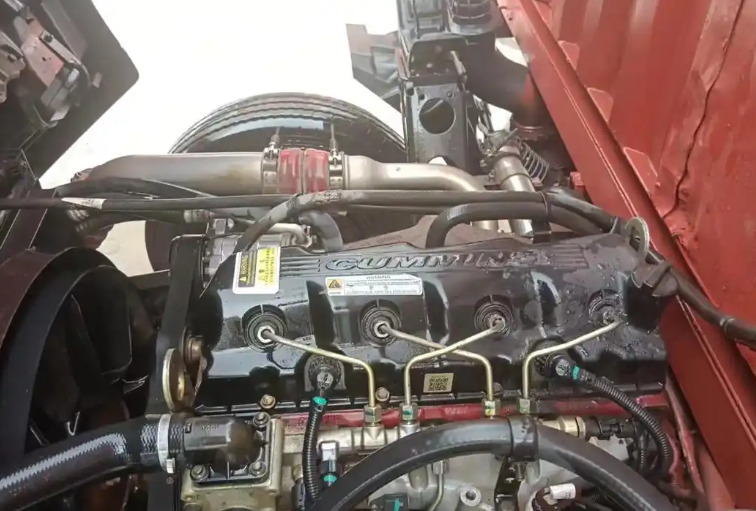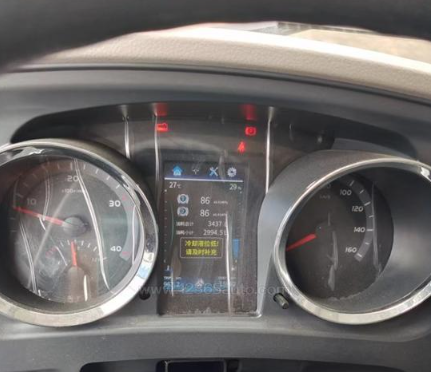HOWO Light Truck - Basic Automotive Fault Diagnosis Methods
I. Preliminary Inspection-
Question the User: Inquire about when the fault occurred, the symptoms, the conditions at the time, the cause, and whether any repair or disassembly has been attempted.
-
Preliminarily determine the fault range and location.
-
Retrieve the trouble codes and identify the fault content.
-
Investigate based on the fault range indicated by the codes, paying special attention to whether connectors are loose or detached, and if wiring connections are correct.
-
After repair, verify that the fault has indeed been resolved.
-
If no trouble codes can be retrieved, or if retrieved codes yield no specific fault content, make a rough judgment of the fault range based on symptoms and排除 (eliminate) the fault by checking the performance of each component one by one.
II. Common Fault Diagnosis

1. Engine Will Not Start or is Difficult to Start
(1) Starter does not crank or cranks slowly
a. Check battery voltage.
b. Check for loose battery terminals and cable connections.
c. Check the starting system, including the ignition switch, start switch, neutral safety switch, and the starter itself. Check if any wiring connections are loose.
(2) Starter cranks normally, but engine does not start
a. Retrieve trouble codes.
b. Check the fuel pump operation.
c. Check if the idle system is working correctly (if the idle system is faulty, the engine may start when the accelerator pedal is depressed).
d. Check the ignition system, including high-voltage spark, ignition timing, and spark plugs.
e. Check the intake system for leaks.
f. Check if the Mass Air Flow (MAF) sensor or Manifold Absolute Pressure (MAP) sensor is malfunctioning.
g. Check if the injectors and the cold start injector (if applicable) are operating correctly.
h. Check the EFI system circuit, including relevant terminals on the ECU connector.
i. Check for mechanical faults.
2. Poor Engine Idle
1) Retrieve trouble codes and analyze the cause.
2) Check the intake system for leaks.
3) Check the operation of the PCV valve in the crankcase ventilation hose (should be closed at idle).
4) Check if the idle adjustment screw on the throttle body is correctly set. Incorrect adjustment can cause a lean mixture at idle, leading to unstable idle.
5) Check ignition timing.
6) Check fuel injector spray pattern/operation.
7) Check the EFI system circuits and components.
8) Check the condition of the mechanical system.

3. High Idle Speed
1) Check if the throttle valve is stuck open.
2) Check if the cold start injector continues to inject fuel.
3) Check if the Throttle Position Sensor (TPS) output voltage is incorrect.
4) Check if fuel injection pressure is too high.
5) Check if the vacuum hose to the fuel pressure regulator is detached or broken.
6) Check if the idle control system and associated VSV (Vacuum Switching Valve) are working properly.
7) Check injector spray pattern and for dribbling/leaking.
8) Retrieve trouble codes to determine the cause.
9) Check the EFI system circuits and components.
10) Check if ignition timing is incorrect.
4. Engine Roughness/Misfire (Unstable RPM)
1) Retrieve trouble codes and analyze the cause.
2) Check the intake system for leaks.
3) Check fuel pump delivery and fuel line pressure.
4) Check if the fuel pressure regulator is malfunctioning.
5) Check injector operation, for individual injectors not firing or inaccurate fuel delivery.
6) Check the ignition system: ignition timing, strength of high-voltage spark, spark plug fouling, etc.
7) Check if the air filter element is clogged.
8) Check if the fuel filter element is clogged.
9) Check the EFI system circuits and components.
10) Check mechanical components: cylinder compression, valve clearance, etc.
5. Engine Backfire (Through Intake)
Backfiring is often caused by a lean mixture or incorrect (late) ignition timing.
1) Retrieve trouble codes and analyze the cause.
2) Check the intake manifold for leaks.
3) Check if the TPS output signal is correct.
4) Check ignition timing.
5) Check if fuel pressure is too low.
6) Check if injector pulse width is too short.
7) Check if injectors are stuck or clogged.
8) Check EFI circuits and components, especially relevant sensors: oxygen sensor, coolant temperature sensor, intake air temperature sensor, MAP sensor, etc.
6. Afterfire (Explosion in Exhaust)
Afterfire is mainly caused by incomplete combustion due to factors like a rich mixture, misfiring cylinders, or incorrect ignition timing.
1) Retrieve trouble codes and analyze the cause.
2) Check ignition timing for excessively retarded spark.
3) Check if the cold start injector is still injecting or leaking, and find the root cause.
4) Check the cold start injector timer switch for failure.
5) Check for spark plugs not firing or weak spark in individual cylinders.
6) Check injectors for over-fueling, individual injectors delivering too much fuel, or dribbling.
7) Check if fuel pressure is too high, if the pressure regulator is stuck closed preventing fuel return, or if its vacuum hose is detached/broken.
8) Check if the MAF sensor and TPS output signals are correct.
9) Check the EFI circuits and relevant sensors.
7. Poor Engine Acceleration
1) Check the intake manifold for leaks.
2) Check if ignition timing is too late.
3) Retrieve trouble codes and analyze the cause.
4) Check the fuel injection system: fuel pressure, injector operation.
5) Check the ignition system, especially the knock sensor and ignition module/coil operation.
6) Check if the TPS is functioning normally.
7) Check EFI circuits and components related to fuel injection.
8) Check items like cylinder compression, valve clearance, spark plug condition, and valve timing.
III. Typical Component Failures and Causes
1. ECU (Engine Control Unit)
Generally very reliable. Failure rate under normal use is low (<0.1% before 100,000 km), but increases significantly after extended use (>150,000 km). Main causes:
1) Solder joint failure.
2) Capacitor failure.
3) Integrated circuit (chip) damage.
4) Loose ECU mounting bolts.
5) Failure of other electronic components.
ECU failure can cause failure to start, hard starting, lack of power, high fuel consumption.
2. Sensors
Types include thermistor, vacuum/pressure, mechanical, piezoelectric. Sensors are more prone to failure than the ECU. Main causes:
1) Failure of elastic elements.
2) Damaged vacuum diaphragms.
3) Wear or burning of contact points.
4) Faults in peripheral circuits.
Sensors provide data to the ECU. Their failure directly affects the ECU's information source, leading to loss of control or abnormal engine control.
3. Connectors
The EFI system has many connectors. Working in a vibrating, dusty, hot, and potentially damp environment leads to failures over time. Main causes:
1) Connector aging and failure.
2) Loose terminals.
3) Poor contact.
Faulty connectors cause unstable engine operation, intermittent problems. Often diagnosed using the "wiggle test" (fault symptom simulation).
4. Injectors & Cold Start Injector
These are wear items. Particularly susceptible to clogging and sticking with lower fuel quality. Should be cleaned at least annually. Common failures:
1) Faulty solenoid coil.
2) Stuck needle valve.
3) Clogging.
4) Dribbling/leaking.
5) Poor spray pattern.
6) Faults in peripheral circuits.
Injector faults typically cause cylinder misfire or poor operation. Significant variation in fuel delivery between injectors (>8-10ml difference over 15 seconds) causes overall engine roughness.
5. Vacuum Hoses and Other Lines
The EFI system uses many vacuum hoses and lines. Being rubber, they age due to heat, oil exposure, and time. Common issues:
1) Hose hardening/cracking.
2) Cracked hose ends.
3) Loose clamps.
4) Loose connections.
Result is vacuum leaks, causing lean mixture, hard starting, poor idle, lack of power.
6. Fuel Pressure Regulator
Regulates fuel pressure for injection. Failure significantly affects fuel delivery, causing unstable operation, hard starting, lack of power. Blocked passages or a ruptured internal diaphragm are common failure modes.
